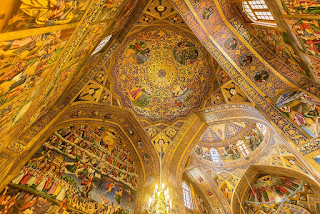Drazark: The royal mausoleum of the Armenian Kingdom of Cilicia
It would be necessary to write much more about this matter, but this is enough from a confused mind at an uncertain time; for on this day, at this very hour, we have heard that the lawless ones (the Mamluks) have burned down the (monastery of) Drazark.
Little is known today about Drazark (lit. "knock-on-the-door") which was one of the most important monasteries in Armenian Cilicia, serving as both a royal mausoleum (like the Basilica of Saint-Denis or Saints Peter & Paul Cathedral) and center of scholarship. Indeed, Drazark is mentioned in a number of our medieval sources (of which, some examples):
In his Chronicle, Matthew of Edessa tells us that the renowned and blessed vardapet named Meghrik ("Honey") had been buried at Drazark in 1114/1115, and that the monastery (known as "the Cemetery of the Blessed Vardapets" [«Գերեզմանատունք սուրբ վարդապետացն»]) had been renovated by Toros (whom Matthew calls "the great prince of the Armenians").
In mythic fashion, we are told in the History of the Rubenian Dynasty that this Toros had governed Cilicia so valiantly that it came to be called "The Country of Toros". The author of this History also informs us that Ruben was buried there (succeeded by his brother Levon).
Finally, in The History of the Nation of Archers, Grigor Aknertsi writes:
“After a few days, the blessed, Christ-crowned, pious king Het’um was translated to Christ. He was buried with great ceremony in the blessed and renowned monastery called Drazark. May the Lord God glorify his soul together with the blessed kings and crown him with the same crowns that they were worthy of, and glorify him with the same glory and make him worthy of the heavenly mansions where the saints reside.”
After the genocide and until Samvel Grigoryan's recent rediscovery of Drazark, knowledge of its whereabouts had been lost. In an article in Handes Amsorya, Samvel locates the monastery to the modern Turkish village of Kibrislar (which lies about 20 miles north of the old Armenian capital, Sis). In 2019, Hetq published an interview with Samvel about this research on Drazark, and about Cilcia's relevance to modern Armenia.



Comments
Post a Comment